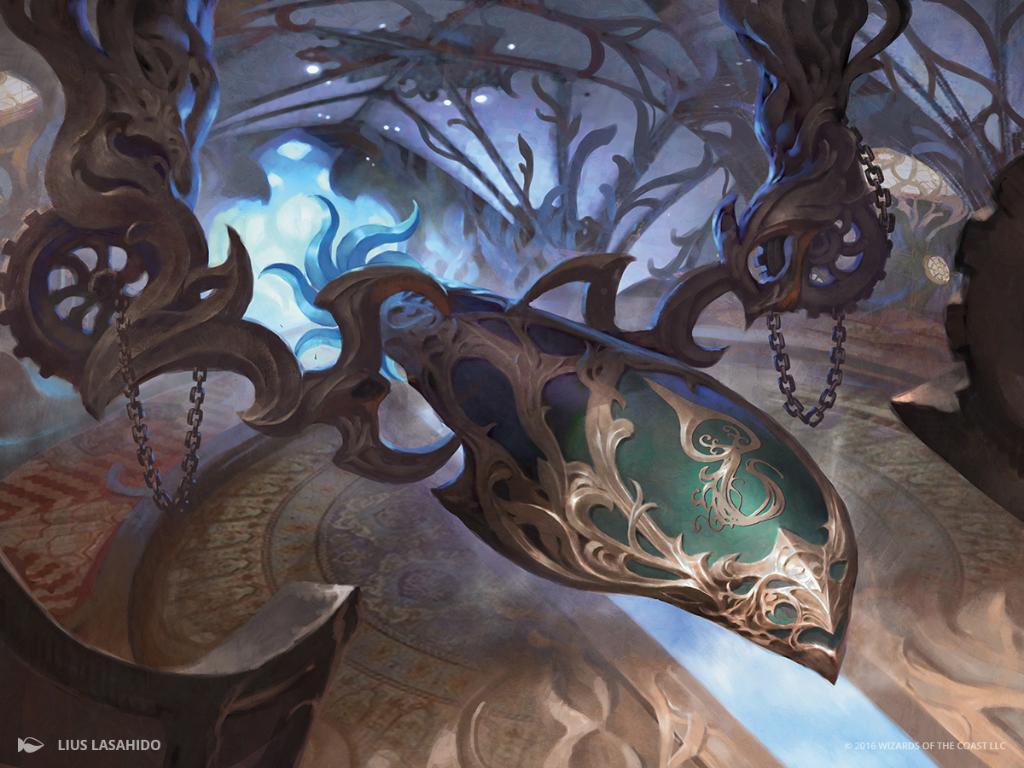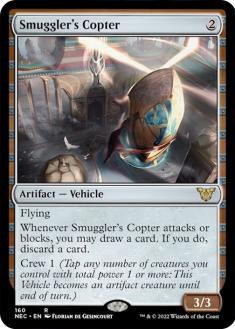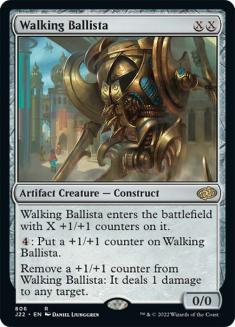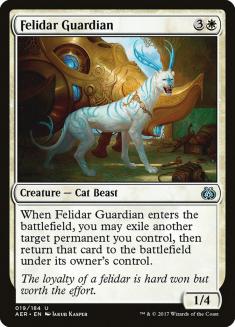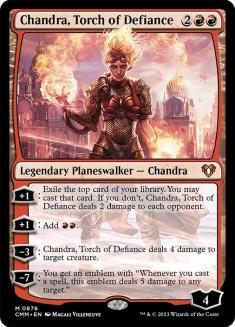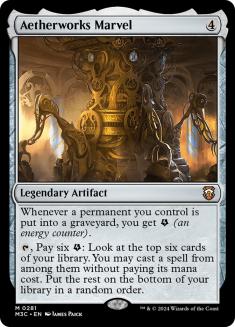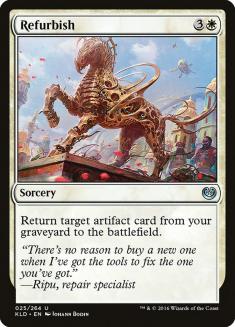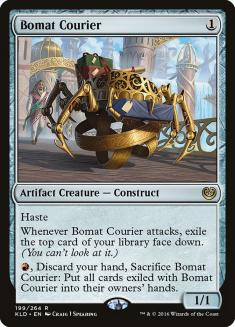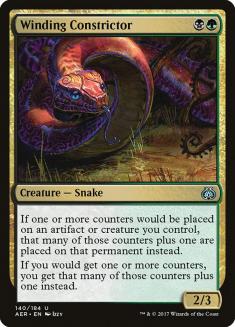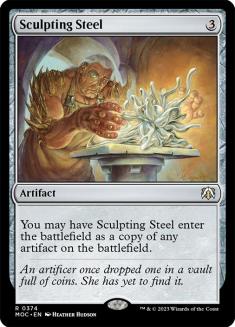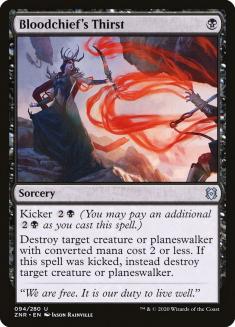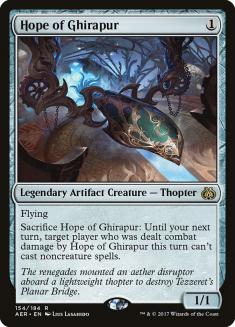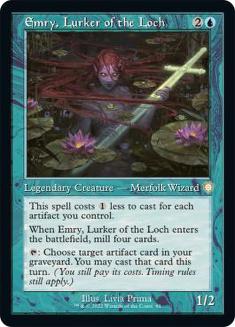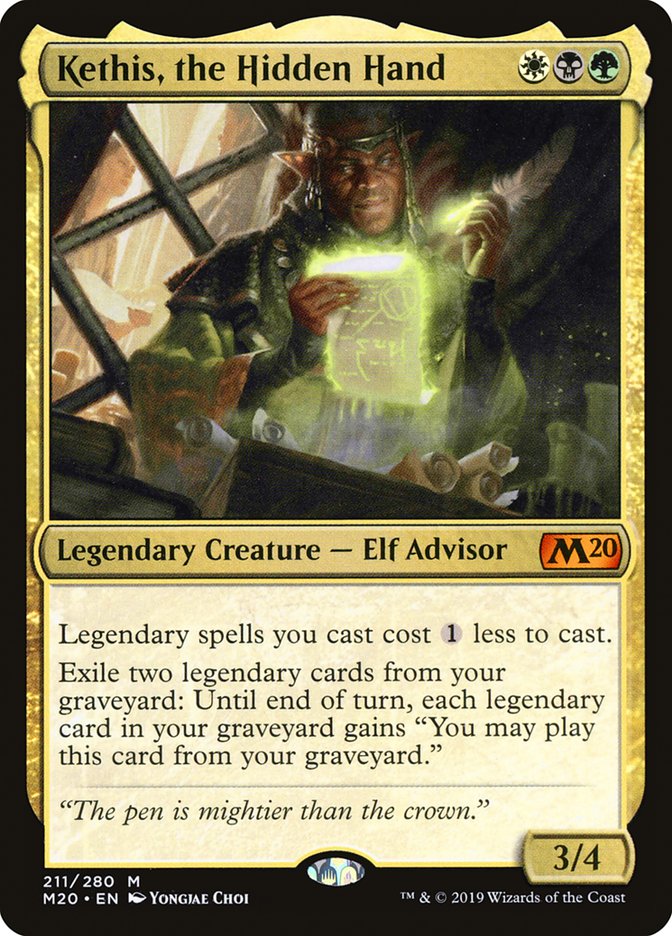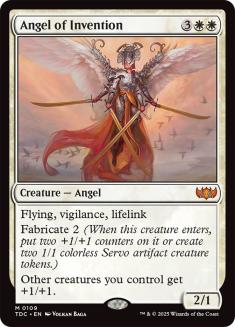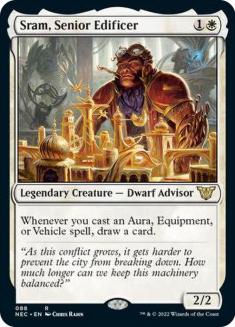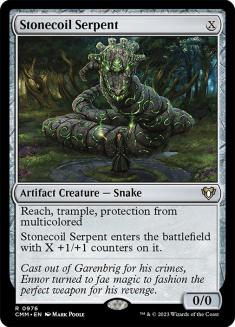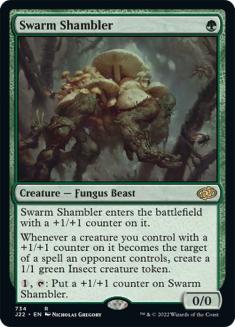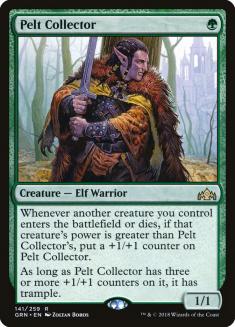Okay, so stop me if you’ve heard this one before, but…
Jumpstart Amonkhet Remastered Kaladesh Remastered will completely change Historic on Magic Arena (Arena). With roughly 300 (!!) cards being injected into the format, its landscape will be completely upended.
With all of the new cards on the horizon, and the seeming lack of buzz around this shift, I wanted to share some of the archetypes I’ll be sinking some time into and where I’ll be starting with them.
I know it’s repetitive, but they pay me every time I open an article that way, so I’m not gonna fix what ain’t broke (CEDitor’s note: Cha-ching indeed!).
Kaladesh Remastered comes out next week, but I’ll be taking a couple of weeks off. That means that like any good American during the first weekend of November, I’ll be bringing Christmas early, with some sweet, sweet Kaladesh-fueled Historic lists.
Before sinking our teeth into some lists, however, we need to ask ourselves the most important question: What’s actually in Kaladesh Remastered?
The Old
Kaladesh Remastered is comprised primarily of cards from Kaladesh and Aether Revolt. Pretty striaghtforward stuff off the bat, but there are a few notable exceptions that aren’t exactly surprising:
Smuggler’s Copter, the Looter Scooter itself, has been kept out of Kaladesh Remastered. With the card’s omnipresence in the fairer formats it’s legal in, and the lack of cheap interaction to take care of it, preemptively benching Herbie‘s evil cousin is a no-brainer.
Do you want an infinite combo with Heliod, Sun-Crowned? Because this is how you get an infinite combo with Heliod, Sun-Crowned.
Splinter Twin combo isn’t even legal in Modern, and you think we’re gonna get it in Historic? Please.
All kidding aside, even outside of the wild interaction with Saheeli Rai, Felidar Guardian is abusable with more cards than the aforementioned Rai, and it cracking something in half is not an “if,” but a “when.”
Past that, the greatest hits from Kaladesh and Aether Revolt are going to be making their way to Arena in just under a week, with some new friends joining the party as well:
Oh.
It’s just… It’s just Sculpting Steel. Okay well that makes things easy.
Decks!
Creatures (17)
- 4 Ulamog, the Ceaseless Hunger
- 3 Whirler Virtuoso
- 4 Servant of the Conduit
- 4 Rogue Refiner
- 2 Uro, Titan of Nature's Wrath
Planeswalkers (3)
Lands (22)
Spells (18)

Aetherworks Marvel is everybody’s favorite busted thing to point to whenever it becomes legal in a format, and honestly? It might be busto in this format. The biggest difference between Pioneer, where the card doesn’t see a ton of play, and Historic is that Teferi, Time Raveler doesn’t exist at all. The speed of the two formats is also completely different, and doing fair things is just kinda reasonable here.
The expected Aetherworks Marvel into Ulamog, the Ceaseless Hunger curve is in this shell, but Turntimber Symbiosis also gives more ways to simply put an Ulamog onto the battlefield and reduces the deck’s fail rate as a result.
There isn’t much to say about the deck that hasn’t already been written in a few hundred articles in the years since Marvel’s printing, so I’ll just leave it at this:
Uro, Titan of Nature’s Wrath dying to its own ability triggers Aetherworks Marvel to get an energy. Boom. New content.
All kidding aside, for anyone looking to build with Aetherworks Marvel, the first things I’m putting in my notebook of “best stuff to cheat out” are Zacama, Primal Calamity; Craterhoof Behemoth; Genesis Ultimatum; Scholar of the Lost Trove; Rise from the Dark Realms; and Omniscience. Have at it.
Creatures (28)
- 4 Scrapheap Scrounger
- 4 Dread Wanderer
- 4 Spawn of Mayhem
- 2 Gutterbones
- 4 Knight of the Ebon Legion
- 3 Rankle, Master of Pranks
- 3 Murderous Rider
- 4 Skyclave Shade
Lands (20)
Spells (12)

Mono-Black Aggro is my pick for the previously established deck that actually gains the most from Kaladesh Remastered. Before Zendikar Rising, the deck was sorely lacking in the two-drop department, and even afterwards, Skyclave Shade just isn’t the same as Scrapheap Scrounger. Having Skyclave Shade as Scroungers five through eight is decent, of course, but Scrounger really is incredible in these decks.
Fatal Push and Bloodchief’s Thirst look similar on their faces, but Fatal Push is so much better. The fact that it can trade so far up on mana while only costing one is exactly the type of exchange that this deck cuts its teeth on. It isn’t just the flexibility, it’s the difference in price for the two effects. When Murderous Rider, Hagra Mauling, and Rankle are already in the deck as the powerful, mana-inefficient ways of dealing with bigger threats, having cards that will more frequently trade up on mana is a very, very welcome addition to the deck.
Creatures (18)
Lands (20)
Spells (22)
- 4 Shock
- 4 Lightning Strike
- 4 Wizard's Lightning
- 4 Light Up the Stage
- 4 Skewer the Critics
- 2 Spikefield Hazard
Sideboard

This is the epitome of Red Deck Wins in the modern era. Empty your hand as quickly as possible, preferably pointing all of it directly at the opponent’s jaw. From there, use Bomat Courier and Light Up the Stage to refuel as necessary. Bomat Courier is one of the stronger threats in these decks, frequently acting as a Raging Goblin / Treasure Cruise split card.
Chandra, Torch of Defiance is exactly the kind of card that these decks are interested in when trying to progress into the later portions of the game. Because Hazoret the Fervent ends up being awkward against a lot of the anti-creature tools of the format, it’s been a bit less exciting that it looked during preview season. Chandra playing to threat diversification, battlefield impact, and card advantage is the perfect trifecta of things for a card to do in Historic, and I’m expecting it to at least be a sideboard card for the red aggressive decks, if not more.
Creatures (26)
- 4 Hope of Ghirapur
- 2 Teshar, Ancestor's Apostle
- 4 Diligent Excavator
- 4 Kethis, the Hidden Hand
- 3 Gilded Goose
- 4 Emry, Lurker of the Loch
- 2 Lurrus of the Dream-Den
- 3 Kinnan, Bonder Prodigy
Lands (25)
Spells (9)

You didn’t think you’d get out of a deck dump article from me without reading a Kethis, the Hidden Hand deck, did you?
Hope of Ghirapur is an incredible addition of the deck, largely because it’s the glue that holds so many different synergy pieces together.
Hope of Ghirapur is a strong enough card to max out that it allows the deck to fully become an Emry, Lurker of the Loch deck. Previously, Chromatic Sphere was the only card that the deck could really take advantage of looping outside of combo turns. Having a way to make Emry more functional outside of being a combo piece is an unbelievable uptick in the deck’s fail state.
When it comes to the namesake of the deck, Hope of Ghirapur works on two levels. The most obvious point is that it’s a legendary creature to be exiled and/or re-cast with Kethis, but there’s a bit more to the latter half of that equation: Kethis makes Hope free. This means that whenever it’s cast from the graveyard, it costs zero mana, and on combo turns, that means free self-milling via Diligent Excavator.
This is relevant because it expands the range on combinations of cards in the graveyard that lead to Kethis immediately winning the game once there’s a copy of the Elf Advisor and a Diligent Excavator on the battlefield.
If Mono-Black Aggro isn’t the most-improved established deck from Kaladesh Remastered, Kethis is a close second.
Creatures (22)
- 4 Angel of Invention
- 4 Minister of Inquiries
- 4 Champion of Wits
- 4 Merfolk Secretkeeper
- 2 Scholar of the Lost Trove
- 4 Skyclave Apparition
Lands (24)
Spells (14)

After a few months of black-based God-Pharaoh’s Gift decks, we finally get Refurbish, which gives a way to put the seven-drop onto the battlefield that isn’t Gate to the Afterlife.
On top of that, we get one of the colossal, damn-near-impossible-to-race creatures in Kaladesh Remastered that saw play with the card in its Standard iteration. Angel of Invention is cheap enough to be cast on its own and still be a respectable spell, but is also big enough to swat down a Nissa, Who Shakes the World when it’s brought back with God-Pharaoh’s Gift.
This shell might be a little bit too all-in on an otherwise underwhelming combo, but the fact that it can operate with a smaller number of payoffs and enablers than something like Temur Marvel means that it’s a matter of customizing the cards around the package, rather than adapting flex slots.
Creatures (18)
- 4 Kor Spiritdancer
- 4 Sram, Senior Edificer
- 3 Alseid of Life's Bounty
- 3 Hateful Eidolon
- 4 Selfless Savior
Lands (19)
Spells (23)

Here’s a deck that’s benefitted a great deal from the handful of lands that have been added to Arena over the last month or so. Variations of Auras have ranged from fringe playability to “best deck in the format” since the printing of Kor Spiritdancer in Jumpstart.
Sram, Senior Edificer doesn’t apply the same kind of pressure that Kor Spiritdancer can, but it does mean the deck can more reliably have a source of card advantage attached to its spells. This means that having a couple of cards committed to interaction, as well as some Auras that masquerade as removal spells is a new direction for the deck to lean. It’s something we’ve seen in Pioneer, but was a harder pill to swallow in Pioneer with fewer impactful Auras available.
Having more draws that involve seeing greater chunks of the deck means that it’s okay to expand the actual effects offered in the deck, rather than having to commit to some of the more all-in plans a la Curious Obsession.
Creatures (29)
- 4 Winding Constrictor
- 3 Rishkar, Peema Renegade
- 4 Venerated Loxodon
- 4 Pelt Collector
- 2 Voracious Hydra
- 4 Stonecoil Serpent
- 4 Conclave Mentor
- 4 Swarm Shambler
Lands (22)
Spells (9)

Despite originally not appearing in the image gallery for Kaladesh Remastered, Wizards of the Coast (WotC) has since confirmed Winding Constrictor’s inclusion in the set.
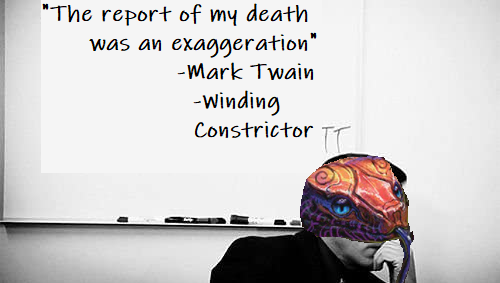
Abzan actually has one of the best manabases in all of Historic, which allows for some exciting curves with Conclave Mentor. Most of the manabases in this article have featured the enemy-colored fastlands from Kaladesh, but they shine the brightest here. As we move further and further back, we’re going to see more lands that are on the same level as the Ravnica shocklands.
Between all of the various one-drop-with-counters creatures, the deck gets to play a pile of Wild Nacatls that outscale the Burning-Tree Emissaries currently plaguing the format. Venerated Loxodon and Rishkar, Peema Renegade are both gimmes in a deck like this, though there’s a chance that Unbreakable Formation does the same thing as Venerated Loxodon without demanding a combat step be taken off.
The Devil in the Details
Without a swath of powerhouses being directly injected into the format in the same way that they were with Amonkhet Remastered, the effects of Kaladesh Remastered are going to seem a bit more muted. Without cards as ubiquitously versatile and powerful as Collected Company, it might not seem as though Kaladesh Remastered is all it’s cracked up to be. That’s far from the case.
Having cards like fastlands and Fatal Push is going to completely reshape what the format looks like and how decks are built. It might not always be the cards from the set that are taking center stage, but Historic will never look the same after the set drops.

